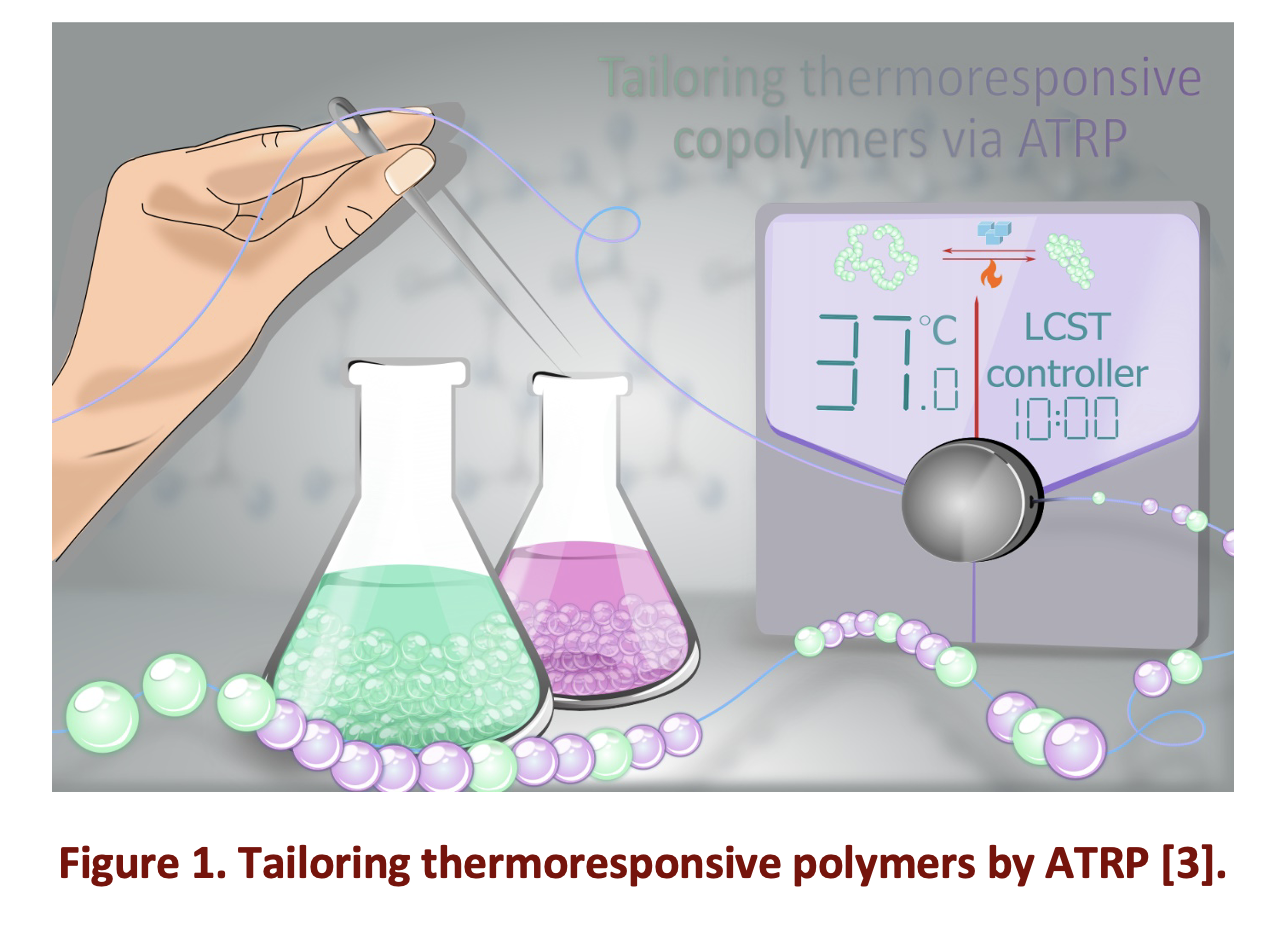Designing drug delivery systems by atom transfer radical polymerization
Abstract

Drug delivery systems that can modify the pharmacokinetic parameters of active substances play a crucial role in modern medicine. Initially, pharmacology and pharmaceutical sciences focused on enhancing therapeutic effects through the discovery of new active compounds. However, the current emphasis has shifted toward optimizing pharmacotherapy by refining drug delivery methods. The controlled release of active substances can be influenced by variations in temperature and pH across different regions of the human body, which often differ between healthy and diseased tissues. For example, areas affected by inflammation or infection tend to exhibit slightly elevated temperatures. Thermosensitive drug delivery systems can leverage this by undergoing a phase transition at specific temperatures, ensuring targeted and controlled drug release. In this context, atom transfer radical polymerization (ATRP) stands out as one of the most effective and versatile techniques for synthesizing polymers with precisely defined molecular structures, enabling the design of advanced drug delivery systems [1]. ATRP allows for the synthesis of macromolecules in various architectures and facilitates the functionalization of diverse surfaces, expanding its potential applications in medicine. Thermoresponsive polymers exhibit a phase transition at a defined temperature, known as the lower critical solution temperature (LCST), resulting in a significant change in solubility [2]. The LCST value depends on the polymer’s ability to form hydrogen bonds with water. This transition temperature can be precisely tuned by incorporating hydrophilic or hydrophobic monomers through copolymerization, modifying end-group functionalities and adjusting polymer architecture and molecular weight. This tunability makes thermoresponsive polymers ideal for applications at physiological temperatures (35–40 °C). Among these, poly(ethylene glycol) (PEG)-based polymers are extensively studied due to their non-toxicity, biocompatibility, high solubility and established clinical applications. Polymers derived from ethylene glycol-based monomers allow for precise LCST tuning within a wide range (26–90 °C), making them highly adaptable for various biomedical applications. Beyond thermoresponsive behavior, biocompatibility is a critical parameter for the application of polymers in pharmacology. Natural molecules rich in hydroxyl groups are frequently used as cores for synthesizing branched polymers, particularly star-like structures. In our recent study, β-CD was modified with PEG-based polymers via supplemental activator and reducing agent (SARA) ATRP, employing metallic copper as a reducing agent alongside a supplemental activator. This approach enabled the synthesis of well-defined macromolecules with β-CD while allowing precise LCST tuning [3]. A similar functionalization strategy has been applied to the modification of cotton surfaces to develop innovative wound dressings. These thermoresponsive materials were designed for potential treatment of skin injuries, such as burns or insect bites, where localized increases in skin temperature could trigger therapeutic effects [4].

References
- N. Corrigan, K. Jung, G. Moad, C.J. Hawker, K. Matyjaszewski, C. Boyer Prog. Polym. Sci. 2020, 111, 101311.
- H. Cui, Y. Zhang, S. Liu, Y. Cao, Q. Ma, Y. Liu, H. Lin, C. Li, Y. Xiao, S.U. Hassan, H.C. Shum Nat. Commun. 2024, 15, 6771.
- M. Klamut, I. Zaborniak, J. Bałbustyn, M. Niemiec, E. Ciszkowicz, P. Błoniarz, P. Chmielarz Polymer 2024, 312, 127645. I
- I. Zaborniak, M. Sroka, K. Wilk, A. Cieślik, J. Raczkowska, K. Spilarewicz, N. Janiszewska, K. Awsiuk, K.l Wolski, K. Pielichowska, P. Błoniarz, K. Kisiel, M. Bednarenko, K. Matyjaszewski, P. Chmielarz ACS Applied Polymer Materials 2025, in press.
Acknowledgments
All the authors acknowledge financial support from Nacional Science Centre in Poland as a part of the SONATA BIS 10 project (grant number: 2020/38/E/ST4/00046).

